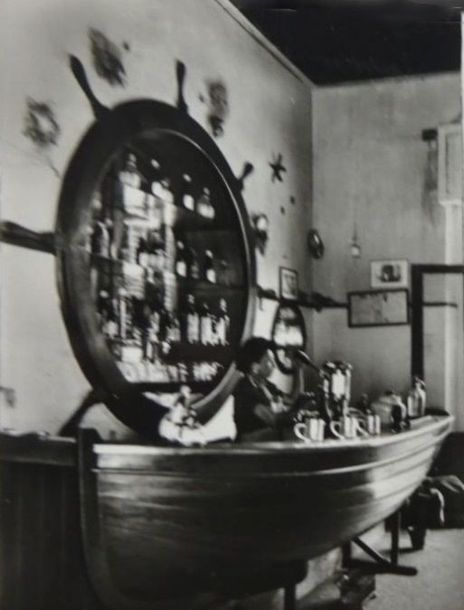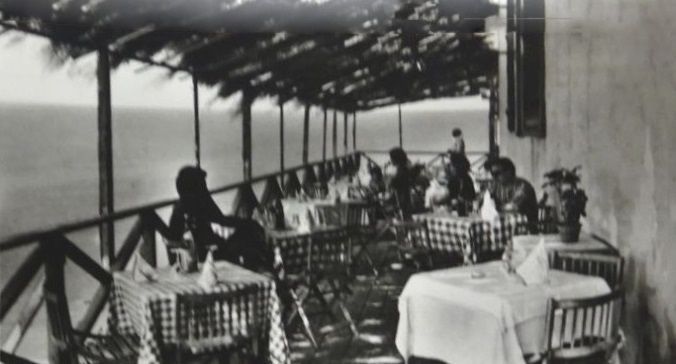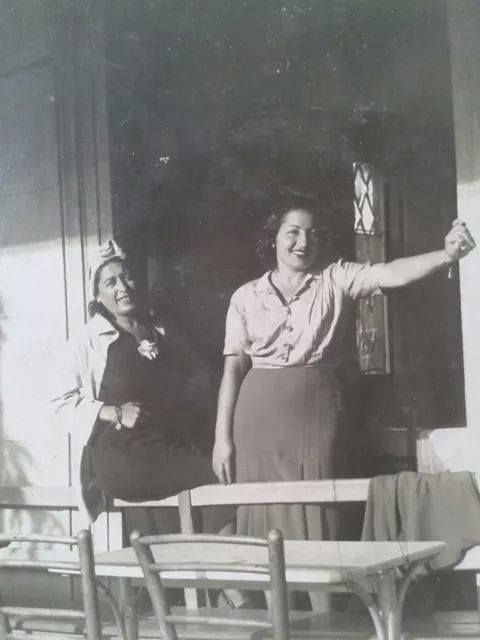Our history

From "Il Sorpasso" to today
"No, I wasn't always like this; a simple parking lot. "I was also a hill: I descended covered by dense Mediterranean flora, down to the Aurelia."
Then, when Livorno began to expand, houses and buildings sprang up, they discovered that beneath the flora and thin layer of soil, there was "Pietra Serena," the best, the least crumbly, the most suitable for building strong walls; and that was my downfall!
They began to dig until they created, month after month, year after year, this empty space that now thankfully serves as a parking lot."
The quarry workers of "Canaccini"
The quarry workers hired by the "Canaccini" company, which managed the quarry, would walk down daily through paths from Montenero and Castellaccio.
They arrived early in the morning and began their work in pairs; one held a special perforated chisel firmly, which initially measured 50, and the other struck the chisel with a seventeen-kilo hammer.
When the hole was started, a longer chisel was inserted, and so on, until one three or four meters long was used.
They worked and sweated like this for hours until the hole in the rock was at least three meters deep.
At this point, dynamite and other materials were inserted, then the fuse was lit, and they prepared to detonate the explosives.
Traffic on the Aurelia was stopped, as it wasn't as intense as it is today; a worker to the north and one to the south, each with a red flag, would stop it, and then, after the explosions and clearing the road of any debris, they would restore it.
At 12:30, they would go to eat; a simple meal: a soup, tomatoes, and whatever else was available, always accompanied by a good glass of wine!


Lunch took place in a small house, the future current restaurant, across the street on the sea side.
It served as a place to store tools, rest from the rain, cold, and sun during the summer.
This little house was destined for a future, being the oldest part of the current restaurant.
After lunch, the quarry workers returned to work, and to rest, so to speak, with the seventeen-kilo hammer, they broke down large rocks dislodged by the explosives into smaller pieces so that they could be used by builders in the city to construct future Livorno buildings with lime and solid red bricks.
Work ceased only towards evening, and some quarry workers went down to the sea to swim and also to catch some mullet or sea bream to serve their families' dinners, using small bombs prepared with a bit of dynamite taken in the morning.
Sometimes, in this operation, someone would get injured by premature explosions when lighting the fuse.
The heavy work of the quarry workers wasn't the only one along the coast; on the Aurelia road, sitting on a pile of stones, with his fingers wrapped in leather pieces tied with string, was the "stone breaker" mentioned in a story by Neri Tanfucio (Renato Fucini). In the other hand, he held a sturdy hammer with which he broke large stones into gravel, which was then spread on the road to keep it in good condition.
There was also another group of Pietra Serena workers, more specialized and better paid: "The Stonemasons."
They mainly came from Antignano and worked on a visible square below the Sassoscritto, where they used chisels and wedges to extract stone slabs used for paving roads or curbs for sidewalks.
Slabs and curbs were then shipped, and remnants of the embarkation point can still be seen, and via the sea, they reached the port of Livorno.


Everything ended because of progress, precisely because of cars and trucks that replaced carts and carriages.
But what do cars and trucks have to do with it?
Due to increased vehicular traffic, ANAS no longer allowed stopping the road for detonations at 12:00 or 17:00. And so, the work ended...
All the coastal quarries, including that of Sonnino, adjacent to Sassoscritto, and Ghezzani of Calafuria, had to cease operations; only the little house by the road, overlooking the coast, remained.
The property then expanded and transformed it into a summer vacation home until 1940.
During the war from 1941 to 1945, the villa became a residence after Livorno began to suffer bombings, making it necessary to escape from the center.
From there, safely, they watched the bombers approaching from the sea, ready to bomb the city.
Then the war ended, and with it, the bombings. For the Sassoscritto house, a new life began, more attractive than the previous one.
It went like this; once they left the Sassoscritto house to return to Livorno, the owners were notified that some Livornese were stealing tiles from the roof at night, as their homes were damaged by bombings.

At that point, a woman named "Cisa" proposed renting the house to sell drinks and sandwiches to passersby, and thus Sassoscritto became a trattoria, making the fortune of the woman, who, rumors aside, seemed to grant the use of some rooms to privileged customers.
The enterprising woman "Cisa," seeing business was going well, agreed with the owners to build a wooden terrace at the back of the house, sea view, where lunches and dinners were served.
Business continued until 1964 when Mrs. Cisa introduced the owner to Mr. Franceschi:
Annunziata, her husband Paris Collodi, and her son-in-law Mr. Bruno Taddei with his wife Flora Collodi.
From that moment, the adventure of the Taddei Collodi family began in 1964...
Over time, the premises were expanded, the wooden terrace enlarged and replaced with a reinforced concrete one.
After years of sacrifices, business picked up, and in 1985 Bruno Taddei decided to involve his brothers Sergio and Luciano, forming the Sassoscritto company with their families, which managed the structure until May 2022, when young entrepreneur Roberto Capenti took over the company for a new adventure.
NOW IT'S TIME TO WRITE NEW BEAUTIFUL PAGES OF HISTORY
If you have any historical information to share or any old photos to send us, write us an email or contact us on social media.





